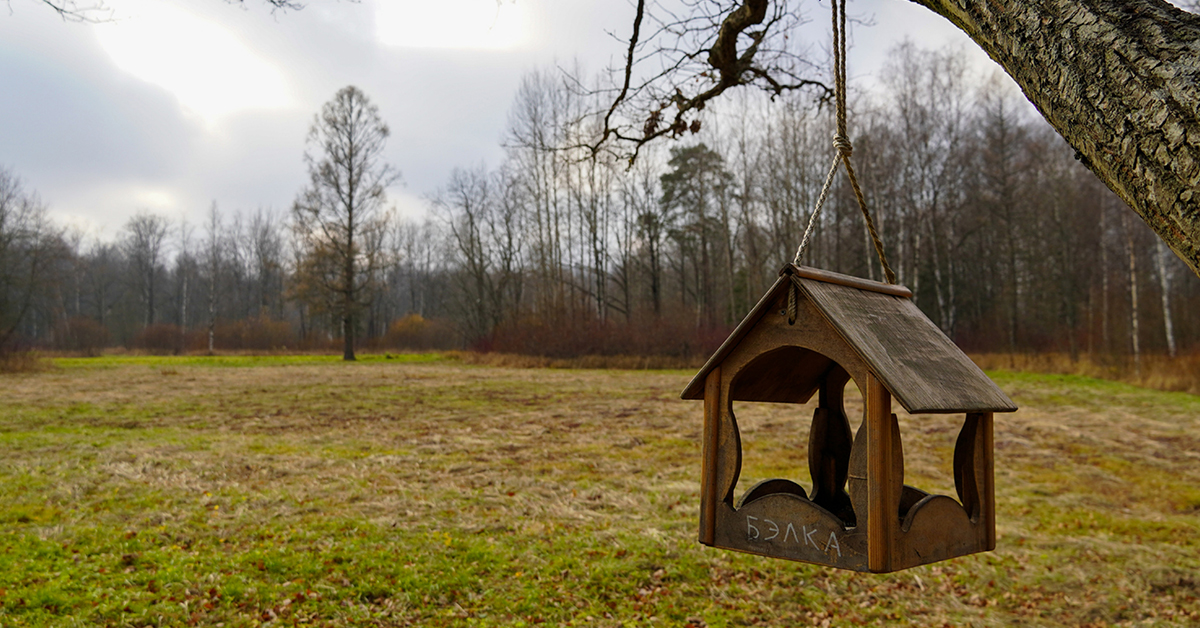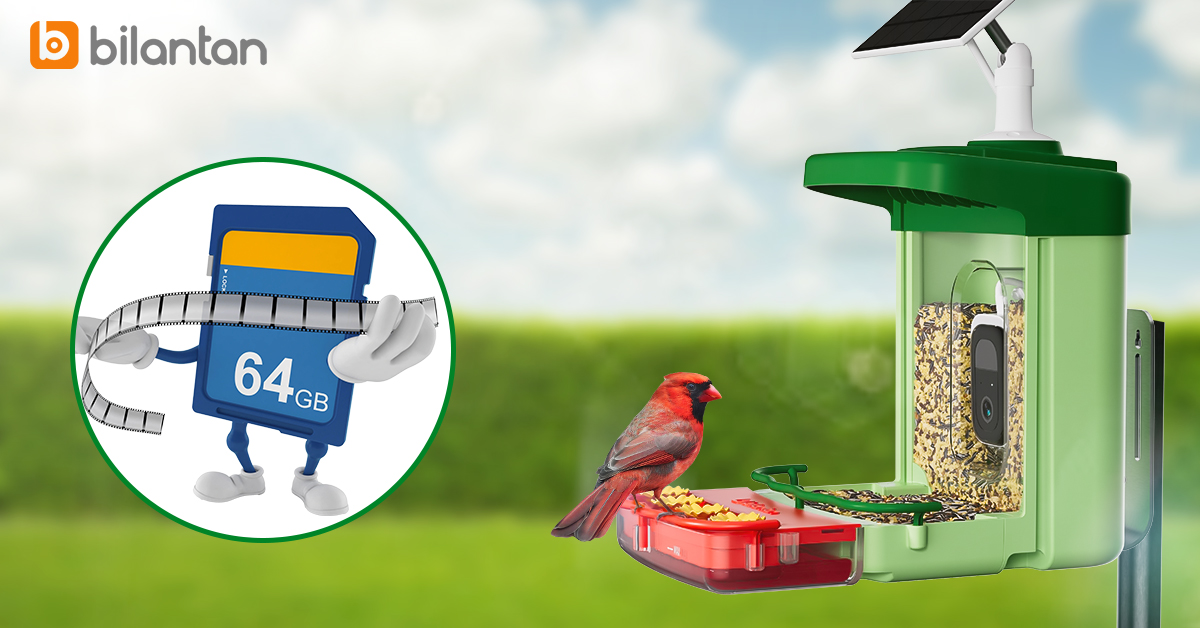Introduction :
You’ve set up bird feeders in your yard, hoping to attract beautiful birds, but instead, you find that squirrels are stealing all the food while the birds remain uninterested. Even though you see birds flying around and perching in nearby trees, they don’t seem to visit your feeders.
So, what can you do to make your yard more inviting for birds? Follow these 11 essential tips to create a bird-friendly habitat and turn your backyard into a haven for feathered visitors.
11 Tips for creating a Bird Habitat
1.Provide Clean Water

Birds need fresh, clean water for drinking and bathing. A simple birdbath is a great start, but make sure to:
- Change the water every 2-3 days to keep it clean and prevent mosquito breeding.
- Use a heated birdbath in winter to prevent water from freezing.
- Place the birdbath about 10 feet away from shrubs or cover to reduce the risk of predators lurking nearby.
- Consider adding a small fountain or dripper, as the sound of moving water attracts more birds.
2.Offer a Variety of Food Sources

Different bird species prefer different types of food, so offering a variety can attract a more diverse range of birds:
- Black-oil sunflower seeds appeal to many bird species.
- Suet cakes are great for woodpeckers and other insect-eating birds.
- Nyjer seeds attract finches.
- Fresh fruits and nectar are excellent for orioles and hummingbirds.
- Mealworms are perfect for insect-loving birds like bluebirds.
Use squirrel-proof feeders or place baffles above and below to prevent squirrels from stealing the food.
Tip: Keeping bird feeders and birdbaths clean is essential for preventing the spread of diseases among birds. Check out this guide on how to clean your bird feeders and birdbaths safely.
3.Plant Native Plants in Your Garden
Before designing your bird-friendly garden, take some time to explore local natural areas such as parks, forests, and wildlife sanctuaries. Observing these environments will help you understand the native plant species and how they naturally grow in your region. Pay attention to how different plants form layers—tall trees, understory shrubs, ground cover—and how they often grow in clusters or drifts. Re-creating a similar structure in your garden using native species is the key to providing birds with familiar food sources, shelter, and nesting sites.
A study published in 2023 in the journal Ecosphere by Cal State Los Angeles ornithologists Noriko Smallwood and Eric Wood showed that native plants can boost bird populations during the nonbreeding season. Bird richness and abundance—measuring how many species were found and how many total birds were present—both spiked in winter in Southern California yards that consisted of about 80% native plants.
By choosing plants that naturally occur in your area, you can create a habitat that is both low-maintenance and highly beneficial to local bird species. Rodomsky-Bish adds that people shouldn’t worry about getting their entire property planted with natives: “The research shows that if you can get your space to around 70% natives, you’ll see most of the benefits to birds and other wildlife.”
4.Remove Invasive Non-Native Plants

Invasive plants compete with native species, reducing food and shelter for birds. Research your area’s invasive plants and remove them. Some common invasive plants include:
- Japanese honeysuckle
- English ivy
- Purple loosestrife
Replacing these with native alternatives will help restore the natural ecosystem for birds.
5.Avoid Chemicals & Pesticides

Pesticides and herbicides can poison the insects that many birds rely on for food. Instead of using harmful chemicals:
- Encourage natural pest control by attracting insect-eating birds like chickadees and bluebirds.
- Use organic gardening practices and plant companion species to deter pests naturally.
- Accept some insect activity as a necessary part of a healthy ecosystem.
6.Prevent Window Collisions

Glass windows can be incredibly dangerous for birds. Reflecting foliage or the sky, they can appear like open spaces for birds to fly into, making them vulnerable to strikes. Since there are so many windows in urban and suburban areas, the impact on bird populations is significant. A 2014 study found that up to 1 billion birds die each year in the U.S. due to window collisions.
To help prevent these tragic events, there are several strategies you can implement:
- Apply window decals or tape to break up reflections.
- Use external screens or netting to create a visible barrier.
- Position feeders either very close (within 3 feet) or far away (over 30 feet) from windows to reduce impact speed.
- Keep indoor lights off at night, as they can disorient migrating birds.
7.Keep Pets Under Control

Free-roaming cats are a major threat to birds, killing billions each year. To protect birds:
- Keep your cat indoors, or create a secure catio (outdoor cat enclosure). A recent study by scientists at the Smithsonian Conservation Biology Institute reported that between 1.4 billion and 3.7 billion birds are killed each year by cats roaming outdoors.
- Supervise dogs and prevent them from disturbing nesting sites.
- If outdoor cats are common in your neighborhood, place feeders and birdhouses at least 10 feet high and away from potential hiding spots.
8.Minimize Artificial Lighting at Night

Artificial lights can interfere with bird migration patterns and increase window collisions. Reduce light pollution by:
- Turning off outdoor lights when not needed.
- Using motion-sensor lighting instead of continuous illumination.
- Closing curtains or blinds at night to minimize indoor light spill.
9.Add Birdhouses & Nesting Boxes

Many bird species rely on cavities in trees or nest boxes for shelter. When installing a birdhouse, consider:
- Choosing the right size and entry hole for the species you want to attract.
- Placing it at the correct height (e.g., bluebird boxes should be about 5-6 feet off the ground, while owl boxes need to be much higher).
- Ensuring proper ventilation and drainage to keep the nest dry.
Avoid using birdhouses with perches, as these can give predators easy access.
10. Create Diverse Layers in Your Garden

The best bird habitats mimic natural ecosystems with a variety of plant heights and structures. Design your yard with:
-
Tall trees for perching and nesting.
-
Smaller trees and shrubs for shelter and food sources.
-
Ground covers, grasses, and wildflowers to attract insects and provide seeds.
-
Brush piles or fallen logs as hiding spots for birds and small wildlife.
Forested clearings with multiple layers of vegetation attract the highest number of bird species.
11.Retain Natural Elements
Birds often use dead trees as perching posts to sing and defend their territories. These trees provide essential nesting cavities for cavity-nesting species, as well as drumming sites for woodpeckers. Fallen branches from live trees offer additional shelter and protection.
In contrast, a manicured lawn typically does not provide much food or habitat for birds. Lawns require regular fertilization, mowing, and the use of pesticides, which can create a host of environmental problems. By retaining natural elements like dead trees, fallen branches, and allowing areas of wild growth, you can foster a more bird-friendly environment that supports a variety of bird species and other wildlife.
Enjoy Your Bird-Friendly Backyard!
By following these tips, you can create a welcoming and safe environment for birds to visit, feed, nest, and thrive. Now it’s your turn to enjoy the beauty of birdwatching!
 Want to get even closer to your feathered friends? Consider setting up a smart bird feeder camera to monitor bird activity and capture amazing close-up footage. Additionally, you can participate in birdwatching programs like eBird to record and share your observations with a global community of bird lovers.
Want to get even closer to your feathered friends? Consider setting up a smart bird feeder camera to monitor bird activity and capture amazing close-up footage. Additionally, you can participate in birdwatching programs like eBird to record and share your observations with a global community of bird lovers.Happy birdwatching!




Leave a comment
All comments are moderated before being published.
This site is protected by hCaptcha and the hCaptcha Privacy Policy and Terms of Service apply.